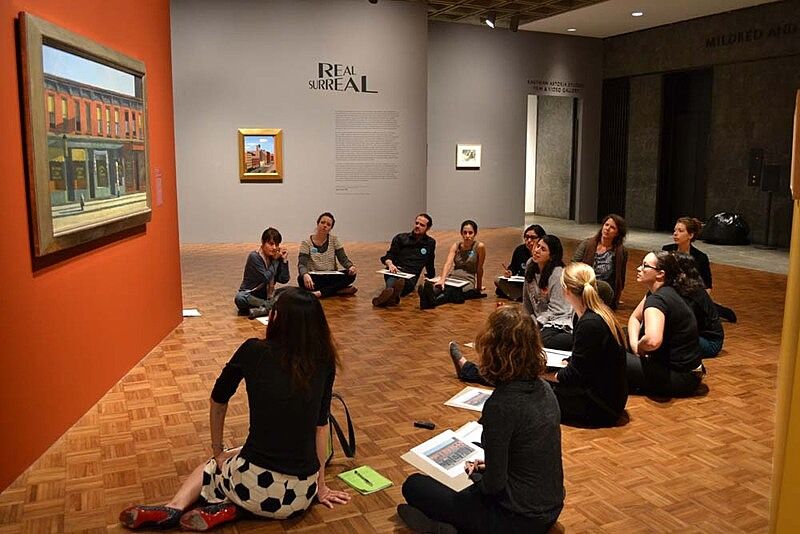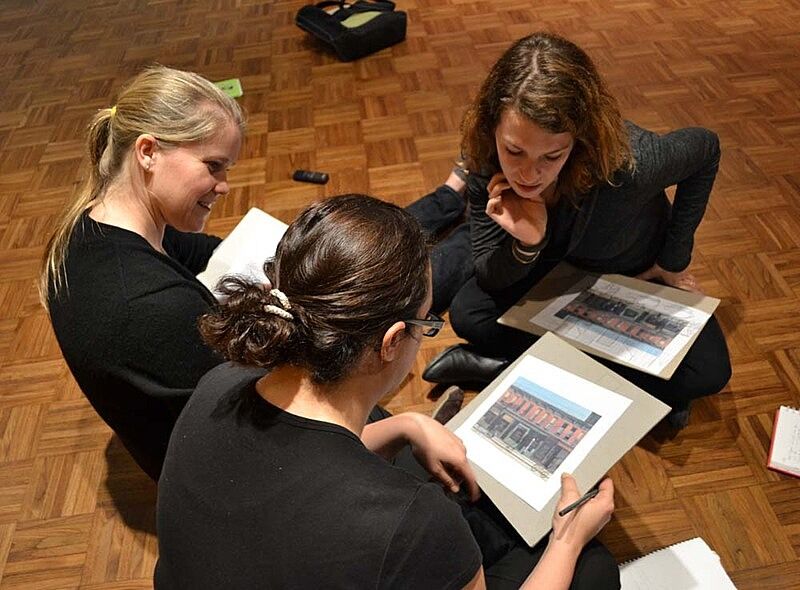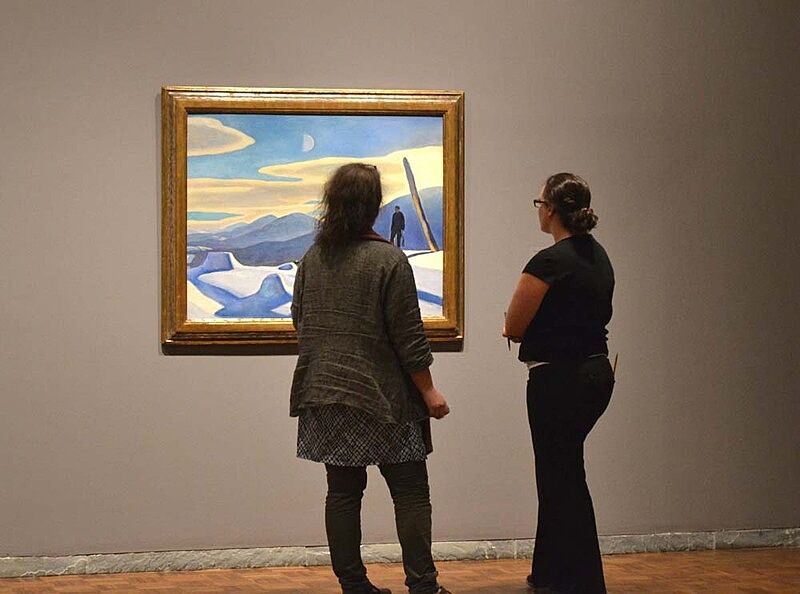Teacher Exchange: A Meeting in Real/Surreal
Jan 4, 2012
Our Teacher Exchange meeting in early December focused on the exhibition, Real/Surreal. Through paintings, drawings, photographs, and prints drawn entirely from the Whitney’s collection, the exhibition revealed the fascinating tension and overlap between the real observable world, and that of the imaginary and subconscious. During the meeting, we explored how various gallery-based activities can encourage students to look more closely at a work and dig deeper into the artists’ ideas, materials, and processes. We also discussed the ways that these non-discursive strategies support differentiated learning among students with diverse needs.
Whitney educators led us through a series of writing and drawing activities, and a role-playing exercise that could easily be used in art classes, drama rehearsals, and writing workshops. After a short conversation, we did a drawing activity in front of Edward Hopper’s Early Sunday Morning (1930). Each of us was given a copy of Hopper’s painting upon which we were asked to sketch modern updates to the street scene. Hopper made this painting about eighty years ago based on a real place that he knew—Seventh Avenue South in Greenwich Village, New York City. We created multiple interpretations of contemporary city life, and sparked lively conversations about the ways in which the city’s appearance has changed or remained untouched by technology, architecture, and commerce. We looked at the painting again and noticed a small dark rectangle that rose above the building at the upper right corner of the canvas—the suggestion of a skyscraper looming in the background. It did not catch our eyes at first, but after the drawing activity, all of us could see the threat of the tall building that seemed to overshadow the quiet street.
My favorite activity of the evening was a writing project: each participant was asked to select a work and describe it in as much detail as possible using written words. After we had finished our writing, we exchanged our descriptions with a partner who had chosen a different work. With only the narrative texts as clues, we wandered through the galleries, attempting to identify the specific work as described by our partner. This activity was a great way to develop a set of creative vocabulary inspired by the works in the exhibition. The activity also provided opportunities for independent viewing while still focused on a task. I am excited to try this activity with my group of high school students on our next trip to a museum.
By Kiara Downey, a participant in the Whitney’s Teacher Exchange program.
Downey teaches English Literature and Drama at The United Nations International School.



